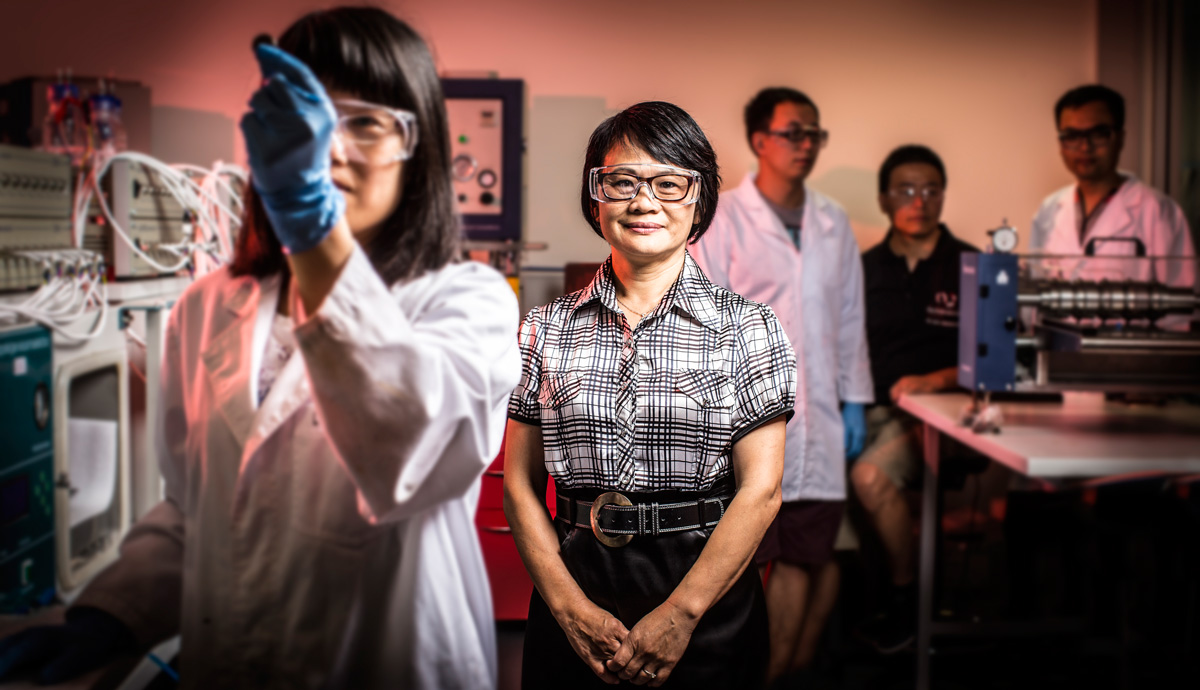March 16, 2016
Soaking up the atmosphere helps batteries ‘breathe’
Imitating the shape and texture of a household sponge could hold the key to harnessing the air we breathe to build more lightweight and powerful batteries.
Researchers at UOW’s Institute for Superconducting and Electronic Materials (ISEM) have harnessed the chemical reaction between oxygen and lithium to build a battery that could be ten times more powerful than current technology.
Lithium-ion batteries are commonly found in modern electronics, from laptops to mobile phones, but increased demand for lighter-weight batteries for use in electric vehicles and the technological limits of lithium-ion are pushing researchers to look for alternative battery chemistries.
Using oxygen in battery construction offers an appealing solution. Because the lithium-air batteries draw oxygen from the surrounding atmosphere, their weight is much less than other battery types and they can typically store ten times more power than lithium-ion batteries.
The field is relatively new and developing suitable materials for the electricity-generating chemical reaction as well as improving their overall performance and efficiency remains a challenge.
The ISEM researchers, led by Professor Jiazhao Wang, have developed a new electrode, that looks and acts like a sponge to successfully address the challenges.
Their method involved fabrication of a three-dimensional electrode made of nickel cobalt oxide that has large and small pores and tunnels, much like a sponge.
In a lithium-air battery, oxygen reacts with lithium to generate electricity. But it also creates lithium peroxide, which deposits on the electrode and the build kills, or suffocates, the reaction.
 Professor Jiazhao Wang and team have developed a new electrode that looks and acts like a sponge to improve performance and efficiency
Professor Jiazhao Wang and team have developed a new electrode that looks and acts like a sponge to improve performance and efficiency
This presents a conundrum for researchers: the lithium peroxide needs to be present for part of the charge cycle because it feeds the electricity-generating reaction - the more reactions produced, the higher the capacity that can be delivered from the battery.
The researchers heated a mixture of soluble starch, and dissolved nickel and cobalt salts in a solution to create a spongy gel-like substance. Dehydration in a freezing left a three-dimensional shape.
Reheating to high temperature causes the starch to turn to gas and creates holes as it disperses. The result is the sponge-like shape full of tiny holes that can be used as an electrode.
Tests showed the microscopic tunnels and pores in the electrode help store lithium peroxide as the battery charges, and decompose it during discharge, as well as improve the transport of oxygen and electrolyte, which underpin the battery’s capacity.
“The battery performs exceptionally well when compared to batteries made of similar materials and reported in research literature,” Professor Wang said.
“The theoretical concept of an oxygen-based battery is theoretically quite straightforward, but practically very hard to make.
“This study highlights the importance of a novel electrode design and opens up a promising strategy to develop highly efficient oxygen electrodes for lithium oxygen batteries.”
The research, which was carried out with PhD students Lili Liu, Jun Wang, Yuyang Hou under the guidance of Associate Professor Jun Chen, Professor Hua-Kun Liu, Professor Jiazhao Wang, and Professor Yuping Wu was published recently in the journal Small.
:format(jpg)/prod01/channel_3/assets/live-migration/www/images/content/groups/public/web/media/documents/mm/uow211902.jpg)